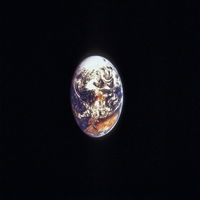Science and Medicine at Your Fingertips
There is a very important initiative which will likely have far reaching consequences.
A number of organizations are creating a Public Library of Science (PLOS), which is a non profit organization of scientists and physicians who are committed to making the world’s scientific and medical literature a freely available public resource. The impressive Board of Directors includes the Nobel Prize winner Harold E. Varmus, Chairman of the Board, and President & Chief Executive, Memorial Sloan-Kettering Cancer Center in New York; Patrick O. Brown
, Stanford University School of Medicine and the Howard Hughes Medical Institute and Michael Eisen, Lawrence Berkeley National Laboratory University of California at Berkeley.
Some of the journals that are relevant to Health, Integrated Medicine, Meaning and Purpose are in the "journals" section in the side bar on the left.
Let me explain why this is so important. Since the early days of science, most of what has been written has been hard to get at and therefore often open to misunderstanding and misquotation. Books – including textbooks – are full of errors that have been repeated from one to another, in most cases simply because the authors did not bother to check their sources. There’s a good example in popular literature. Book after book has repeated the story of the Hundredth Monkey. According to the story, Japanese scientists in the 1950s discovered that when a hundred monkeys learned a new task, monkeys elsewhere – without any physical means of contact – suddenly and spontaneously learned the same thing. The idea was that once the global monkey mind learned something, then the information was available to monkeys everywhere.
A number of years ago I looked at all the original research papers, copies of which are lodged in the Senate House Library in the University of London. The papers showed that the whole thing was untrue! There is a short piece about the hoax here.
If the papers had all been openly available, this urban legend would never have been able to take root.
Our next task will be to show people without a strong scientific background how to go about reading a paper: it is not as simple as it may seem, but is a learned skill. So almost anybody can be shown how to do it.
This is a terrific step toward greater freedom of information and everyone involved deserves our thanks.
Dark Matter Mapped

As we have discussed before, many creative scientists working at the
cutting edge of physics and astronomy have a strong intuition that dark
matter is more than just an astronomical curiosity, but something of
immeasurable importance to all of us.
An extraordinary article was published this morning in the journal Nature.
Dark matter does not reflect or emit detectable light, yet it is thought to account for 80-90% of the mass in the Universe. Using the Hubble telescope astronomers have presented data at the 209th meeting of the American Astronomical Society (AAS) in Seattle, Washington, showing a map of the cosmic scaffolding of dark matter upon which the stars and galaxies are assembled.
The research involved over 1,000 hours of observations followed by many more thousands of hours of analysis. The research provides the best evidence yet that the distribution of galaxies follows the distribution of dark matte, because dark matter attracts “ordinary” matter through its gravitational pull.
Previous studies of dark matter relied on simulations, this one details its large-scale distribution in 3 dimensions. As the authors said in a press conference, it is like suddenly seeing a map of a city for the first time, when before all you had to go on was an aerial picture of the street lamps at night.
What is fascinating is that this is direct confirmation of what until now had just been a theory. But interesting problems remain, so we certainly do not know everything yet.
Students of the Ageless Wisdom will be intrigued by these findings that seem to echo predictions and statements about the Universe made many centuries ago.
There are some amazing pictures here.
I shall keep you informed as this story develops and as its practical implications are revealed.
Predicting Response to Medicines
Much as we would all like to rely upon natural and non-invasive approaches to treatment, there are times when pharmaceuticals also have their place.
A common question is whether there are any good ways to predict who will respond to what treatment and whether we can predict the risk of side effects. Unfortunately the answer is that although we are getting better, and the research base if growing rapidly, there is still a lot of trial and error in prescribing.
An exciting and relatively new area is called pharmacogenetics: using our genetic make-up to allow us to tailor treatments to each of us individually. Over the last few months there have been a lot of media reports about being able to use simple blood tests to predict who will respond to antidepressants. (As an example, see this report from the Washington Post).
Unfortunately these reports, though undoubtedly well meaning, have not told the whole story. You might be interested to see a brief article about this interesting topic that helps put things in perspective.
Though there are some highly reputable institutions that are trying to help provide genetic testing not only for drug responses but also to predict the risk of developing certain illness, unfortunately there are also plenty of rogues who prey upon the worried and unwary. I was recently shown pages and pages of all kinds of tests on an individual: genetic tests; biochemical tests; allergy tests and all kinds of unorthodox tests using every imaginable type of gizmo, from magnets to devices claimed to measure the aura.
Not surpringly, the individual was thoroughly confused by this vast morass of information. The best thing to do was to tear it all up and to start again with the simple question: "What do you think is wrong?" Deep down inside, she knew the answer.
I have spent years working in and running laboratories, so I am not shy about using science and technology.
Science and technology must be our servants and not our masters.
“During my eighty-seven years, I have witnessed a whole succession of technological revolutions. But none of them has done away with the need for character in the individual or the ability to think.”
–Bernard Mannes Baruch (American Financier and Government Official, 1870-1965)
“We must learn to balance the material wonders of technology with the spiritual demands of our human race."
–John Naisbitt (American Futurist and Author, 1929-)
“Humanity has passed through a long history of one-sidedness and of a social condition that has always contained the potential of destruction, despite its creative achievements in technology. The great project of our time must be to open the other eye: to see all-sidedly and wholly, to heal and transcend the cleavage between humanity and nature that came with early wisdom.”
–Murray Bookchin (American Ecologist, 1941-)
Eye Color

“The eye is the jewel of the body.”
–Henry David Thoreau (American Essayist and Philosopher, 1817-1862)
In November we had a look at new data suggesting that eye color may have developed as a kind of “instant paternity test.”
Now scientists in Brisbane, Australia are reporting that they have uncovered the genetics of eye color, and that they are surprisingly simple. Which is just what we would expect if something were biologically important.
The research is published in the current issue of the American Journal of Human Genetics.
After studying 3,839 individuals, it turns out that of the six billion or so “letters” that make up the human genetic code, a handful of “single nucleotide polymorphisms” (SNPs – pronounced “snips”) are largely responsible for the color of your eyes. These SNPs consist of a change in just one “letter” in the genetic sequence. All the SNPs are located near a gene called OCA2. This gene produces a protein that helps give hair, skin and eyes their color. And mutations in OCA2 cause the most common type of albinism. So these gene mutations modify the amount of pigment in the iris: people with brown eyes have more pigment than people with blue. The odd one out is people with green eyes. In them the changes in the genes seems to have produced a functional change in the pigmentation protein itself.
This is interesting for another reason. There are a small number of medicines and clinical conditions that are associated with changes in the color of the iris. But I have also seen some people whose eye color has changed very rapidly in response to changes in mood, attention or concentration. I have also sometimes seen it happen when people have achieved some altered state of consciousness through prayer or meditation. Yet there is hardly any scientific research into this odd but uncommon phenomenon.
I did find two studies from Korea that attempted to associate a gene for angiotensin converting enzyme and the apolipoprotein e gene with iris type. The trouble with these studies was that they were very small and started with the assumption that iridology could be used to diagnose a physical problem, even though the research (1. 2. 3. 4.) has shown that it cannot.
I had assumed that these rapid changes in eye color had something to do with changes in blood flow in the eye, and that does remain the most likely explanation. But the question now is whether the SNPs associated with eye color are themselves modulated by mood, cognition or spiritual insight.
If you have ever observed changes in iris color in yourself or other people, I would be very interested to hear from you.
“All our souls are written in our eyes.”
–Edmund Rostand (French Poet, 1868-1918)
A Biological Marvel
The BBC is carrying a fascinating story today, though I wonder if it would have attracted as much attention at any other time of the year!
The world’s largest lizard – the Komodo dragon has joined the list of creatures that has produced offspring without male contact. It is called parthenogenesis and there is going to be a paper about this in the journal Nature, but a lot of interest has focused on Flora, a resident of Chester Zoo in England, who is awaiting her clutch of eight eggs to hatch, with a due-date estimated around Christmas. Kevin Buley, who is a curator at Chester Zoo and a co-author on the paper in Nature said: "Flora laid her eggs at the end of May and, given the incubation period of between seven and nine months, it is possible they could hatch around Christmas – which for a ‘virgin birth’ would finish the story off nicely."
Flora, who has never been kept with a male Komodo dragon, produced 11 eggs earlier this year. Three died off, providing the material needed for genetic tests.
These revealed the offspring were not exact genetic copies (clones) of their mother, but their genetic make-up was derived just from her. The research team concluded they were a result of asexual reproduction, and are waiting for the remaining eight eggs to hatch.
This has shades of Jurassic Park, where it was thought that only breeding females and excluding boys would guarantee no breeding.
Think again.
Life is tenacious and resourceful. If there is a way to survice and to leave a genetic legacy, it will.
Energy and Fields, Prana and Qi

I just had a kind and important letter from a correspondent:
Dear Dr. Petty,
I enjoy reading your reviews in Amazon.com. Could you allow me to ask a question here?
I saw in a couple of reviews you oppose the idea of “Everything in this world is made of energy.” Could you recommend some books which can explain this more beside Entangled Minds?Thanks & Best Regards
One of the problems that I explore in detail in Healing, Meaning and Purpose is what I refer to as “Physics envy:” the attempt by non-specialists to use physics to buttress comments about “Energy” in biology and healing. Comments that would produce apoplexy in most practicing physicists. Within the last few days I have been listening to some CDs by a biologist in which he makes the usual claim that quantum physics “proves” that the universe in made of energy and that consciousness and matter are inextricably linked. He then goes on to say that the famous equation E=MC2 proves it, despite the fact that we are still waiting for a rapprochement between quantum and relativistic theories. To his dying day, Einstein remained skeptical about quantum mechanics.
The biologist may be right. The trouble is that his evidence is not.
The loose usage of the word “energy” may make people wotking in biology and healing look foolish and ill informed, and it is guaranteed to prevent any meaningful dialogue between biologists and physicist. This is not a semantic argument but a practical one.
When someone says, “I like his energy,” or “the arrangement of the furniture has good energy,” or I got his to tap his hand and that cured his energy,” what do these statements actually mean?
According the Lawrence LeShan, the idea that “energy” is some universal substances that is the basic building block of the universe arose from a slogan created by a popularizer of science in the early 1950s. The original slogan was that the “Universe is made up of energy,” with the corollary that all solid matter was simply congealed energy. This was some years before the development of modern field theory. Journalists, broadcasters and science fiction writers commonly wrote about converting matter into energy, though this is impossible according to the current understanding of the laws of physics.
Energy is always manifested as a state of a particular field. It may be manifested as a matter-field or an energy-field. When one form of being is converted to another, its energy is passed on. I am indebted to Professor Chris Clarke formerly of the University of Southampton for an excellent metaphor: “when one form of manifest field converts into another, its energy is like a relay-runner’s baton that is passed on, but always requires a runner; though without the baton there’s no point in running. The universe is made of energy in the sense that without the energy the fields could not actualize; the universe is also made of fields, in that without the fields there would be nothing to carry the energy.”
There is only one energy and its different manifestations – electricity, the strong and weak forces, and so on – are fields.
There is an extremely interesting idea in philosophy, called “Energy monism,” that proposes that energy and consciousness are aspects of one another. This is an attractive concept about which I shall have a bit more to say on another occasion.
This concepts about “energy” as the fundamental force of the universe later became consolidated with a wonderful example of an inappropriate use of metaphor: Qi and Prana were equated with energy, though nobody schooled in Chinese or Sanskrit would translate the words that way. So many New Age ideas conflated “Energy” with Qi and Prana, and some even went so far as to claim that matter is no more than a series of vortices in the primary “stuff.”
I once termed some of the common intellectual fallacies, Petty’s Paralogia:
- The inappropriate use of metaphor
- The King’s New Clothes phenomenon
- Moving the goalposts
If you are looking for some more reading, it depends a little on the level that you are looking for.
Here are one or two that I have recently found interesting, useful and very readable:
Healing Beyond the Body by Larry Dossey
Decoding the Universe by Charles Seife
Radical Knowing by Christian de Quincey
And finally for Energy Monism, Paradigm Wars by Mark Woodhouse is excellent.
If these do not give you what you need, do let me know: I have scores of other recommendations. You may also find some of the lists that I’ve put up at Amazon may guide you, for example this one.
The Maharishi Effect

In 1976, researchers associated with the Maharishi Mahesh Yogi first described that in communities where there were large numbers of serious meditators, crime rates went down as the number of meditators went up. This has become known as the “Maharishi effect,” and some of this research has been published in highly reputable journals. You can see a summary of some of the research here. I also discuss this whole fascinating issue in more detail in Healing, Meaning and Purpose.
As you can imagine, it is controversial and has stirred up some heated arguments. But mounting research is pointing to evidence of a global consciousness that is developing and evolving.
More data on this effect was presented at a news conference on Wednesday, November 1, at Maharishi University of Management in Fairfield, Iowa. Scientists reported on a rigorous, controlled econometric analysis of the first 100 days of a $12 million scientific demonstration project to monitor the effects of 1200 advanced Transcendental Meditation practitioners on quality of life indicators.
The research is said to show that since the project began on July 23, 2006, the Dow Jones Industrial Index and the S&P 500 have posted total gains of approximately 12%, and the NASDAQ has climbed nearly 18%. The Dow has repeatedly hit all-time record levels, the S&P reaching a 5.5-year high, and the NASDAQ climbing to a five-year high.
If true, this is astonishing.
I don’t doubt the sincerity or scientific expertise of any members of the research teams. I’ve checked out some of the other work that each has done, and it has all been of the highest order. The one problem is that this is like a pharmaceutical company having a press conference to tell the world about a new wonder drug before anyone outside the company has had a chance to check out the research. Yes the data is out there, but there are a hundred and one messy little details that need to be checked over.
We have no reason to doubt, except that doubt has to be the perpetual mind set of the scientist. Many factors can make the markets go up and down. And until the research has been checked and validated by every interested person in the world we have to remain skeptical.
Let me tell you how this checking is done. Last week I was sent a research paper by a prestigious journal with a personal note from the editor asking me to see what I thought of the research. I read through the paper in great detail, checking the citations, the methodology, statistics and even the spelling.
This is a task undertaken by every senior academic, often once or twice a week. We don’t get paid for doing it, and the whole process is anonymous: I don’t know who did the research and they don’t know who is passing judgment on their labors. We do this work for the common good. Earlier this evening I completed my report to the editor. But it doesn’t stop there. One or two other experts will have done the same with the paper and then the editor decides based on all of our reports.
Then there are two more steps. If the editor decides to publish, then the global scientific community will crawl all over the research to see if we reviewers have missed anything and if the research looks okay. Finally others will have to replicate the study.
This is why research often seems to progress at a snail’s pace. In actual fact it isn’t. It is going very quickly, but each step is being checked extremely carefully. Even with all of this conscientious effort, research regularly gets published that turns out not to be correct after all.
And with such extraordinary claims we require extraordinarily good proof.
If, as I suspect, the research is indeed found to be correct, it could change the world forever.
Arsenic and Water Safety
Here is a new study that may turn out to be one of the most important of the year.
Tens of millions on people around the world, most particularly in Bangladesh, are forced to drink water containing dangerously high amounts of arsenic. The very same stuff that has been used by countless poisoners.
The classic symptoms of arsenic poisoning are:
- Headache
- Abdominal pains
- Vomiting
- Difficulty breathing
- Light headedness
- Delirium
- Neuropathy
- Stroke
- Skin lesions: usually thickening of the skin of the palms and soles with wart-like excresences
- Reduced production of red and white blood cells
- Increased risk of cancers of the lung, skin, bladder, liver, kidney and prostate
- Death
The exact pattern of symptoms depends on the acuity of the exposure, the amount of arsenic to which a person is exposed and the individual’s own makeup.
The new research – published this week in the journal Science – is from Rice University’s Centre for Biological and Environmental Nanotechnology in Texas, and it may give us a quick and cheap way of getting most of the arsenic out of drinking water. The investigators used minute particles of iron oxide – very similar to common rust – to bind large amounts of arsenic. The iron oxide particles are really tiny: just 12 nanometres (billionths of a metre) across, about 5,000 times smaller than the width of a human hair. When mixed into contaminated water, the tiny crystals became coated with the poison and began behaving like iron filings. The iron oxide/arsenic combination can then be removed from water using a simple hand-held magnet.
One of the investigators, Professor Doug Natelson had this to say, "The idea of using magnetic particles to filter and clean water is not particularly new. The trick here is that these particles are very, very small, which means they’re essentially all surface. So the arsenic sticks to the surface of the particles, and what we’ve found is that when the nanoparticles are in the right range of sizes, you can pull them out of solution with a relatively small magnetic field gradient that you could get from, say, a permanent magnet."
As an additional refinement, the scientists needed to develop a technology that would be usable in one of the poorest parts of the world. In one experiment flakes of rust were made into nanoparticles by heating them in coconut or olive oil at 350C. They could then be used in water purification.
This is excellent news, and if confirmed, it could save hundreds of thousands if not millions of livees, and unspeakably awful chronic ill health.
Eye Color: An Instant Paternity Test?

Most of us learned some genetics in high school. You were probably taught about sweet peas, height and eye color. If mom and dad have blue eyes and little Johnny has brown, then mom probably has some explaining to do.
Sweet peas, height and eye color are examples of genetic determinism: genes determine outcome. But as I have written before, many other genes are not so simple: in behavior and metabolism genes do not so much determine behavior as how the person will react to the environment.
Now there is some fascinating new research about eye color published in the current issue of the journal Behavioral Ecology and Sociobiology.
The color of the human iris is determined by a simple, predictable and reliable genetic pattern of inheritance.
Investigators from the University of Tromso in Norway have shown that blue-eyed men find blue-eyed women more attractive than brown-eyed women. The researchers have postulated that there could be an unconscious male adaptation for the detection of paternity based on eye color.
At first blush this look like a bit of a stretch, but it may not be.
Let’s do a quick revision from high school genetics:
- If both parents have blue eyes, the children will have blue eyes.
- If both parents have brown eyes, a quarter of the children will have blue eyes, and three quarters will have brown eyes.
- The brown eye form of the eye color gene (or allele) is dominant, whereas the blue eye allele is recessive.
It then follows that if a child born to two blue-eyed parents does not have blue eyes, then the blue-eyed father is not the biological father. From an evolutionary perspective, males would be rather interested in knowing whether any children were theirs. So it is reasonable to expect that a man would be more attracted towards a woman displaying a trait that increases his “paternal confidence,” that any children would be his. If the mate also has blue eyes, it would be easy to uncover his partner’s sexual infidelity.
In the study, eighty-eight male and female students were asked to rate the facial attractiveness of models. The pictures were displayed on a computer screen and were close-ups of young adult faces of people who were not known to the participants. The eye color of each model was manipulated, so that for each model’s face two versions were shown, one with the natural eye color (blue/brown) and another with the other color (brown/blue). The participants’ own eye color was also recorded.
Both blue-eyed and brown-eyed women showed no difference in their preferences for male models of either eye color. Similarly, brown-eyed men showed no preference for either blue-eyed or brown-eyed female models. However, blue-eyed men rated blue-eyed female models as more attractive than brown-eyed models.
In a second study, a group of 443 young adults of both sexes and different eye colors were asked to report the eye color of their romantic partners. Blue-eyed men were the group with the largest proportion of partners of the same eye color.
The lead investigator – Bruno Laeng – had this to say, “It is remarkable that blue-eyed men showed such a clear preference for women with the same eye color, given that the present experiment did not request participants to choose prospective sexual mates, but only to provide their aesthetic or attractiveness responses…based on face close-up photographs.”
Blue-eyed men may have unconsciously learned to value a physical trait that can facilitate recognition of their own kin.
See if these findings ring true in your own relationships or in the people around you.
Life is Information at Work
“Information is "a difference that makes a difference.”
–Gregory Bateson (English Anthropologist, Social Scientist, Linguist, Cybernetician and Writer, 1904-1980)
Much of the work in which we’ve been engaged needs us to look very hard at what is life? Is it simply a collection of biochemical reactions glowing in the dark, or is it something more complex, laden in meaning and purpose. This is not an academic exercise: unless and until we can better understand the fundamental processes of life, it is difficult to advance the practice of medicine and the processes of health and wellness.
A fundamental tenet of Healing, Meaning and Purpose is that we live in a non-dual Universe, of which consciousness, information and energy are the primary manifestations and principles. I present a great deal of solid scientific material that you can use immediately. It’s all based on the fundamental concept that illness is caused by degradation in the storehouse of information that sustains the body.
Comprehensive treatment and persistent robust physical, psychological, social, subtle and spiritual health is rooted in clear, harmonious, integrated information. And that is why physical treatments – sometimes including medications – may be an essential component of helping someone get well, but is nonetheless just one piece of the puzzle. It is essential also to ensure that the information and communication between each aspect of a person and his or her environment are also clear, harmonious and integrated. Without those other pieces, we may be doing no more than putting a band aid on a problem.
Valentino Braitenberg the former director at the Max Planck Institute for Biological Cybernetics in Tübingen, Germany, has always had some interesting things to say. He is a truly original thinker who’s also, IMHO, a fine human being.
I recently came across this in his last book, Das Bild der Welt im Kopf: Eine Naturgeschichte des Geistes, published in 2003 by LIT Verlag, Munster:
“Living organisms contain information, are the result of information, pass on information, and information made flesh in the conditions that their environmental niches impose for survival. To read this information is to recognize the very essence of a living organism.”
I think that this is the most succinct summary of what is to be a living organism. Yes, of course, you are made up of atoms and molecules. But the key point is that you are maintained by a constantly flowing river of information. Without it your body, your mind, your relationships and your spiritual essence would cease to flow.
Any treatment worth its salt will always be directed toward correcting and modulating and integrating this flow of information.
Anything less, and we are simply moving around the deckchairs on the Titanic.
“The original root of the word "information" is the Latin word informare, which means to fashion, shape, or create, to give form to. Information is an idea that has been given a form, such as the spoken or written word. It is a means of representing an image or thought so that it can be communicated from one mind to another rather than worrying about all the information afloat in the world, we must ask ourselves what matters to us, what do we want to know. It’s having ideas and learning to deal with issues that is important, not accumulating lots and lots of data.”
–Theodore Roszak (American Social Thinker, Critic and Writer, 1933-)
“Man must go back to nature for information.”
–Thomas Paine (English-born American Political Theorist and Writer, 1737-1809)






